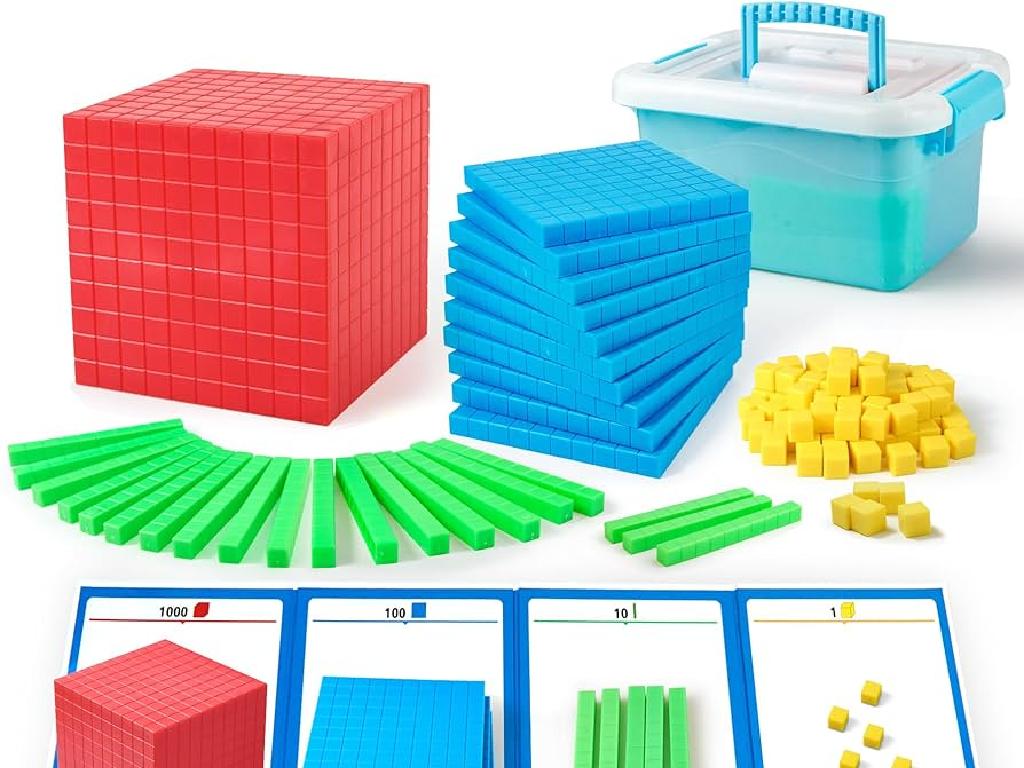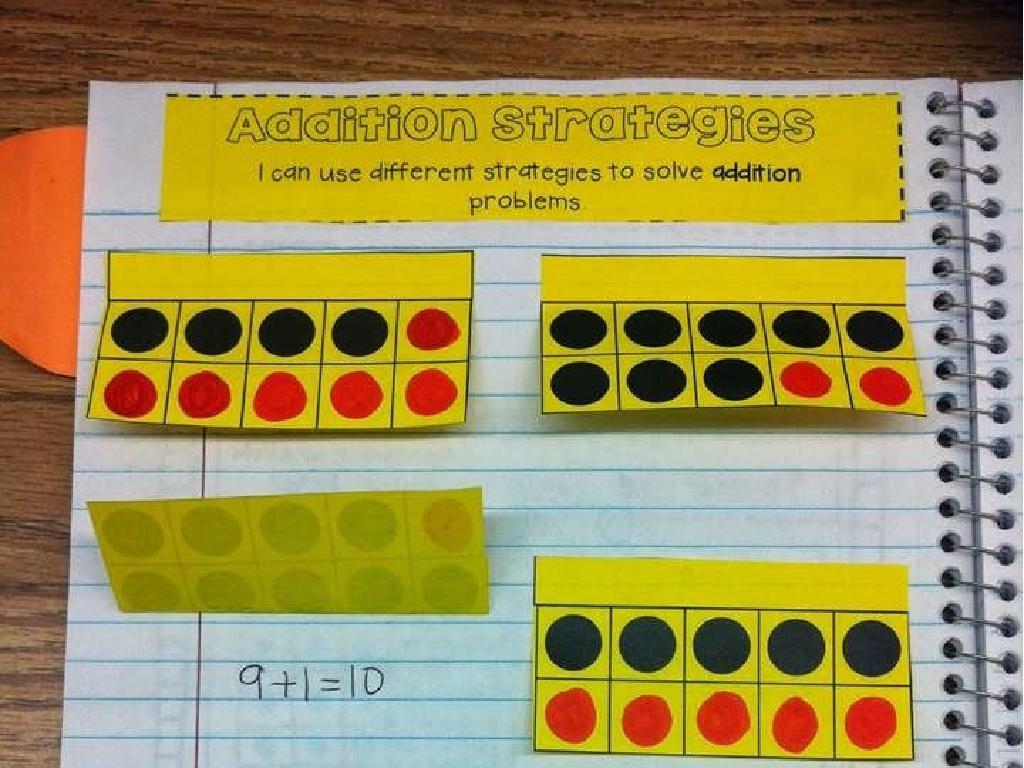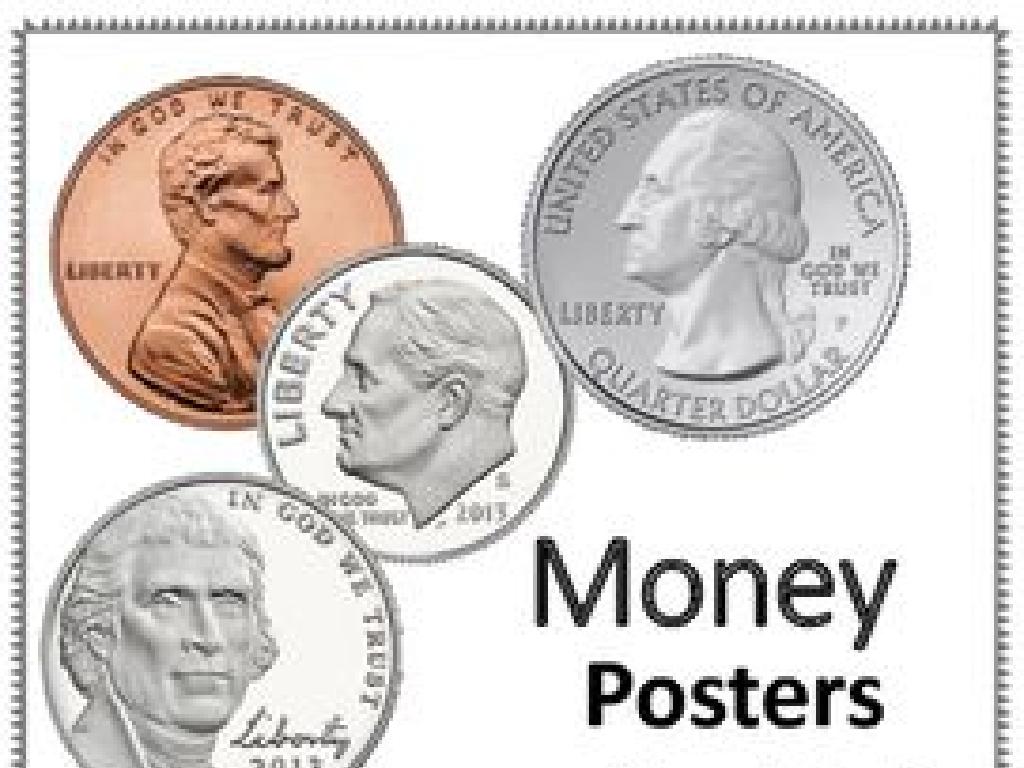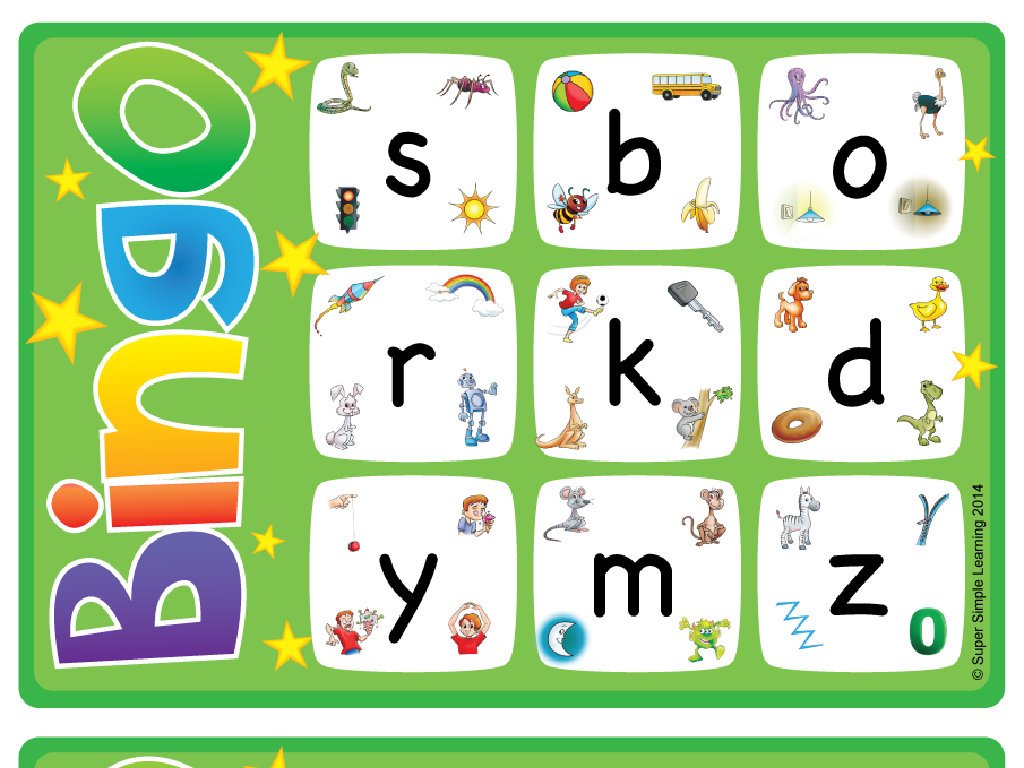Compare Fractions Using Benchmarks
Subject: Math
Grade: Fifth grade
Topic: Compare Fractions
Please LOG IN to download the presentation. Access is available to registered users only.
View More Content
Today’s Adventure: Comparing Fractions!
– Quick recap on fractions
– Fractions represent parts of a whole
– Comparing: What does it mean?
– To examine two things to note differences and similarities
– Using benchmarks to compare
– Benchmarks like 0, 1/2, and 1 help us determine size
– Practice with examples
– We’ll compare fractions like 3/4 and 2/5 using benchmarks
|
Begin with a brief review of what fractions are, ensuring students recall that fractions represent parts of a whole. Then, introduce the concept of comparison, discussing how we can look at two or more items to determine their similarities and differences. Explain that in math, we can use benchmarks, which are reference points, to help us compare fractions. Common benchmarks in fractions are 0, 1/2, and 1. Show how to use these benchmarks to decide which fractions are larger or smaller. Provide examples such as comparing 3/4 and 2/5, asking students which is closer to 1/2 or 1 to determine the larger fraction. Encourage students to think of the benchmarks as ‘stepping stones’ to estimate the size of fractions quickly.
Understanding Benchmarks in Fractions
– Benchmarks: Tools for comparison
– Common fraction benchmarks: 0, 1/2, 1
– Benchmarks like 0, 1/2, and 1 help us quickly estimate the size of a fraction.
– Using benchmarks to compare
– Is the fraction less than, more than, or equal to 1/2? This helps decide which is larger.
– Benchmarks simplify fraction comparison
|
Benchmarks are reference points that we use to compare fractions. They are like ‘measuring sticks’ for understanding how big or small a fraction is. Common benchmarks in fractions are 0, 1/2, and 1 because they are easy to visualize and compare to other fractions. When comparing fractions, ask students to consider if the fractions are less than, equal to, or greater than these benchmarks. This method simplifies the process of comparing fractions without finding a common denominator. Encourage students to practice by picking pairs of fractions and using benchmarks to determine which is larger or smaller.
Comparing Fractions to Benchmarks: 1/2
– Understanding the benchmark 1/2
– Is the fraction more or less than 1/2?
– If numerator > denominator, it’s more than 1/2
– Examples: Fractions vs. 1/2
– Compare 3/4 to 1/2: 3/4 is more because 3 > 2 (half of 4)
– Class Activity: Group Fractions
– Sort fractions into ‘more than’, ‘less than’, or ‘equal to’ 1/2
|
This slide introduces the concept of using 1/2 as a benchmark to compare fractions. Start by explaining that 1/2 is a standard reference point for determining if other fractions are greater or smaller. Emphasize that if the numerator is greater than half of the denominator, the fraction is more than 1/2; if it’s less, then the fraction is less than 1/2. Provide clear examples, such as comparing 3/4 to 1/2, and explain why 3/4 is greater. For the class activity, have students group fractions into more than, less than, or equal to 1/2. This will help them visualize and better understand the concept of benchmarking with fractions. Provide additional examples like 2/3, 1/4, and 5/8 for the activity and encourage students to explain their reasoning for each classification.
Comparing Fractions Using Benchmarks
– Steps to compare fractions
– Identify benchmarks like 0, 1/2, and 1 to compare
– Example: 3/4 vs. 2/5
– 3/4 is closer to 1 than 2/5. Hence, 3/4 is larger
– Use number lines for comparison
– Place fractions on a number line to see which is larger
– Use pie charts for visualization
– Draw pie charts to show fractions visually and compare
|
This slide introduces students to the concept of comparing fractions by using benchmarks such as 0, 1/2, and 1. Begin by explaining the steps to compare fractions: identify the benchmark closest to the fractions in question and use it to determine which fraction is larger or smaller. Use the example of 3/4 and 2/5 to illustrate the concept, showing that 3/4 is closer to the benchmark 1 than 2/5, and therefore larger. Introduce visual aids like number lines and pie charts to help students better understand and visualize the comparison. Encourage students to draw these aids themselves with different fractions to reinforce the concept. The activity for the next class could involve students bringing in their own examples of fractions to compare using benchmarks and visual aids.
Let’s Practice Together: Comparing Fractions
– Practice Example: 5/8 vs. 3/6
– Which is larger, 5/8 or 3/6? Use benchmarks to decide.
– Discuss comparison strategies
– Share how you determined which fraction was larger.
– Engage in guided practice
– Work through problems with the class.
– Receive immediate feedback
– Teachers will provide feedback on your answers.
|
This slide is designed for an interactive class activity. Present the practice example 5/8 versus 3/6 and ask students to compare the fractions using benchmarks such as 1/2 or 1. Encourage group discussion to allow students to share their strategies for comparison, fostering peer learning. Follow this with guided practice where students solve similar problems as a class, with the teacher providing immediate feedback to correct misunderstandings and reinforce learning. This activity will help students understand the concept of comparing fractions in a supportive, collaborative environment.
Class Activity: Fraction Comparison Race
– Pair up for the race
– Use 0, 1/2, and 1 as benchmarks
– Is the fraction less or more than 1/2?
– Compare fractions quickly
– Race to find the larger fraction
– The fastest pair to correctly compare all fractions wins!
|
This activity is designed to make learning about fractions fun and interactive. Students will pair up and use benchmarks of 0, 1/2, and 1 to determine which of two fractions is larger. They will race against other pairs to see who can make accurate comparisons the fastest. For the teacher: Prepare fraction cards in advance. Monitor the pairs for correct comparisons and ensure fair play. Offer guidance on using benchmarks effectively. Possible variations of the activity could include using different benchmarks, comparing more than two fractions at a time, or incorporating mixed numbers. Celebrate all participants and discuss strategies that led to quick and correct comparisons.
Conclusion & Reflection on Fractions
– Key takeaways on comparing fractions
– We learned how to determine which fraction is greater or smaller.
– Using benchmarks in daily life
– Benchmarks like 1/2 help us estimate amounts, like cutting a cake.
– Share an interesting discovery
– Maybe you found a trick for comparing fractions that you want to share.
– Reflect on our learning journey
|
As we wrap up our lesson on comparing fractions, it’s important to reflect on what we’ve learned. Understanding how to compare fractions using benchmarks such as 1/2, 1/4, or 3/4 can be applied to real-life situations like cooking or dividing items evenly. Encourage students to think about how this skill can help them in their daily activities. Ask each student to share one thing they found particularly interesting or a strategy that helped them understand the concept better. This reflection helps reinforce their learning and allows them to appreciate the practical applications of math in their lives.
Homework Challenge: Comparing Fractions
– Compare given fractions using benchmarks
– Use 0, 1/2, and 1 as references to determine which is larger
– Be ready to discuss your answers
– Think about how each fraction relates to these benchmarks
– Bonus: Invent your own fractions for comparison
– Get creative and test your understanding by creating new examples
|
This homework assignment is designed to reinforce the concept of comparing fractions by using benchmarks. Students should use 0, 1/2, and 1 as reference points to determine which fractions are larger or smaller. Encourage them to visualize where the fractions would fall on a number line in relation to these benchmarks. For the bonus activity, students can deepen their understanding by creating their own sets of fractions to compare. In the next class, have a discussion where students share their methods and reasoning. This will help them articulate their thought process and learn from others’ strategies.





